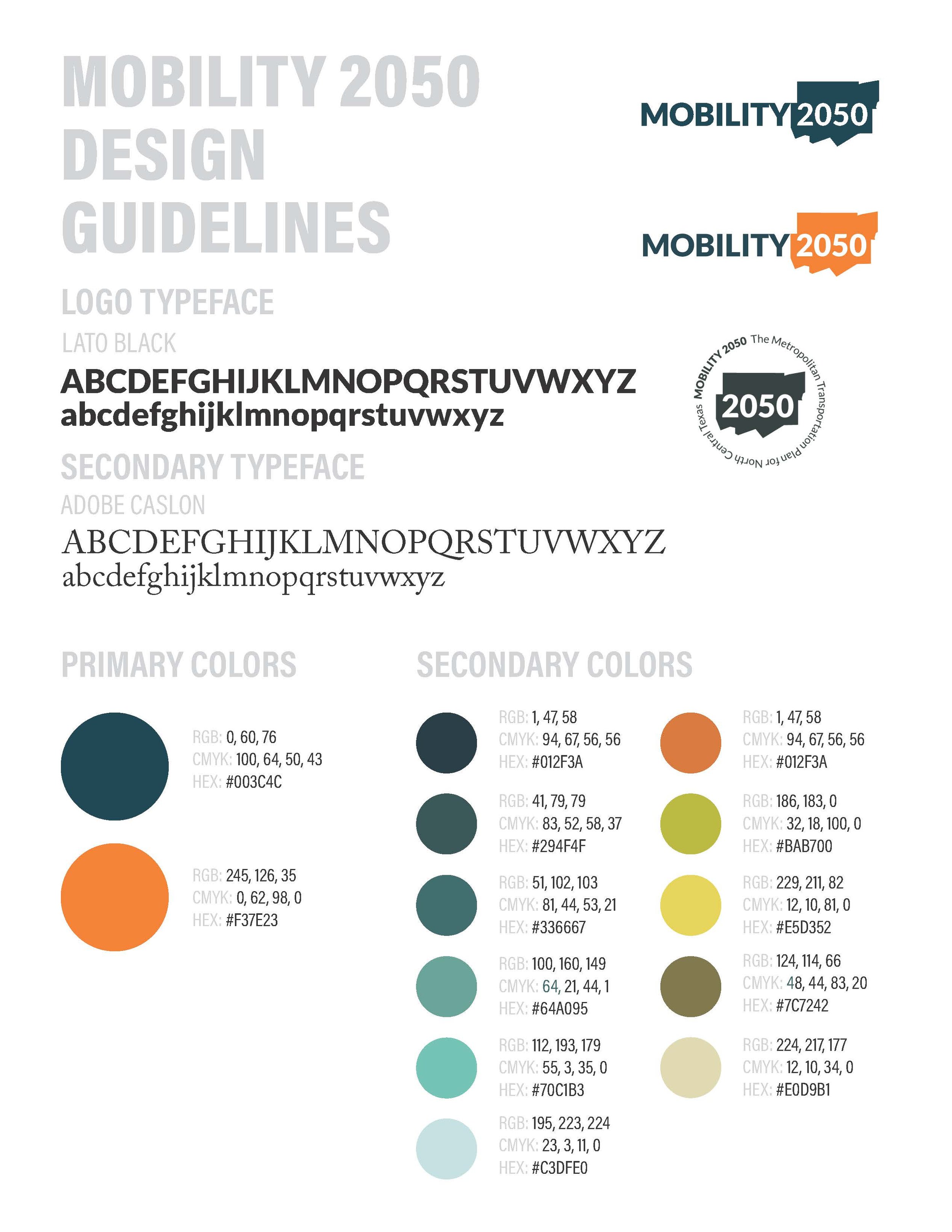Metropolitan Transportation Plan
Every five years the Metropolitan Planning Organization is responsible for writing and submitting transportation plans for 25 years in the future. Previous plans had a logo and some light visual identity, but when I came on at NCTCOG, I built a relationship with the MTP team and together we dreamt up a bigger vision for graphic design on this project. The Mobility 2050 brand was born!
Brand elements designed include:
Logo
Postcards
PowerPoint Template
Web imagery
Iconography
Timeline (right)
Art Direction
Various custom web illustrations for the Mobility 2050 website.




The plan includes 16 goals that are sorted into four buckets. The team asked for a series of icons that would illustrate these high-level concepts. Above are four sketch options for each of the four concepts: Implementation, Mobility, Quality of Life, System Sustainability
Design + Art Direction
The MTP team requested a bilingual postcard to help entice members of the community to participate in the Mobility 2050 survey (left). This postcard was sent to more than 20,000 North Central Texans. I especially enjoyed designing this in English and Spanish, carefully distinguishing between the two languages while not creating a hierarchy that subtly communicated one’s importance over the other.
To go with the postcard the team requested an animated paid social media ad (above). I provided art direction for the ad, which was animated by a colleague.
Key Brand Need: Flexibility
The core output of the MTP team is a humongous document, hundreds of pages long, that the Metropolitan Transportation Plan team puts together. That document lives in Word, not in InDesign, and is owned by their team. So I owned the creative vision, but the MTP team lead put it into practice where it counted.
I developed the design guidelines (left) and coached the MTP team on how to use Microsoft Word SmartArt in line with this brand. This is a great example of my design work at NCTCOG: we are not producing flashy designs with cutting edge technologies. Instead, I often use design thinking to get the best-looking output from simple, non-design software, making the best use we can of the resources available to us.









